Arecibo, Puerto Rico
(ah-re-SEE-boh)Arecibo is known as La Villa del Capitán Correa, in memory of a battle fought successfully on its shores by Captain Antonio de los Reyes Correa and a handful of Spanish Army soldiers to repel a British invasion by sea lead by Admiral Whelstone in August 5, 1702.
Settled in 1556, Arecibo became the third Spanish settlement. Founded sixty years later, in 1616, when the King of Spain granted that section of land and the Indians on it to Lope Conchillos, under the governorship of Captain Felipe de Beaumont y Navarra. The leader (Indian chief) of these Indians was called Jamaica Aracibo, their yucayeque was named after him and ultimately the town was called by that same name.
The town is also known as La Muy Leal Villa (very loyal).
Points of Interest
You can visit La Cueva del Indio, an archeological site, the cave is located on the shores of the Atlantic Ocean, in Bo. Islote. It is called The Cave of the Indian, because drawings of the Indians that lived in this area in the Prehistoric Era were found in the walls of the cave. It is one of Arecibo's most popular destinations, located just few miles east from the Arecibo lighthouse on Route 681 Km 7.8. The area provides wonderful views, you'll find cliffs, arches, caves, and a natural bridge made of natural limestone. Inside the cave walls you can find a collection of Taino Indians petroglyphs, considered one of the largest collections in the area. Since 2017, access to the petroglyphs was removed.
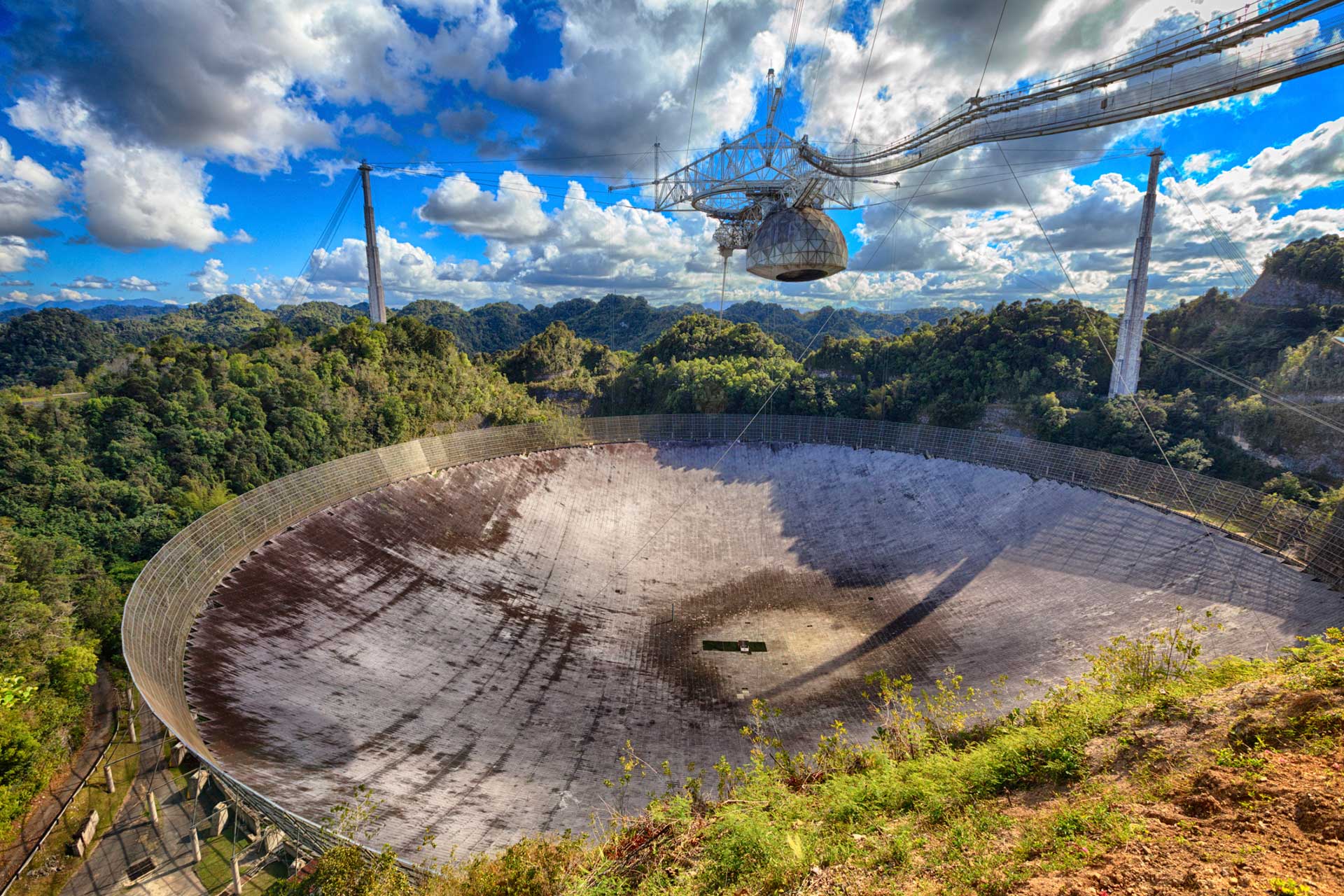
The town has an official U.S. port entry, the harbor is classified coastal and is very small, the port caters to vessels of diverse sizes. The LOCODE of Arecibo is PRARE.
It is also home of the world's largest single-dish radio telescope, located 16 km (10 mi) south of Arecibo. The Arecibo Observatory is an astronomical observatory, which was one of the world's most powerful radar-radio telescopes. After 6 decades of service, and recent years of neglet the site no longer serves an observatory, in October 2022, the National Science Foundation (NSF), announced that the dish will not be rebuilt. Instead, NSF plans to transform it into an educational facility. This instrument, when inaugurated in 1963, employed a 1,000-foot (300 meter) spherical reflector consisting of perforated aluminum panels that focus incoming radio waves on movable antenna structures positions about 500 feet (168 meter) above the reflector surface. The antenna was able to moved in any direction, making it possible to track a celestial object in different regions of the sky. It was collecting radio astronomy, terrestrial aeronomy, and planetary radar data for scientists around the world. The telescope was featured in the movies GoldenEye (1995) and Contact (1997).
The National Astronomy and Ionosphere Center developed the observatory and itwas operated and owned by Cornell University under a cooperative agreement with the National Science Foundation. Conceived in 1958 by William E. Gordon, a Cornell professor of electrical engineering, the radio observatory was in operations, since its completion in 1963 and until its collapse in December 2020. The Arecibo Observatory was powerful enough to receive signals transmitted by a comparable telescope located 1,000 light-years away. Scientists from all parts of the world came to this national observatory to carry out research projects. Route 625, Bo. Esperanza, (787) 878-2612.
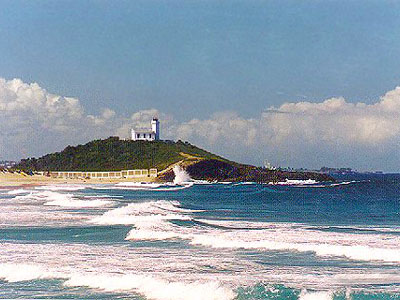
The Cambalache Forest Reserve located between Arecibo, Manati and Berceloneta, and covers an area of 1000 acres with an elevation raging from 5 to 50 meters above the sea level. IT is known as "vivero" (nursery) because it contains plantations of eucalyptus, teak, and mahoe trees. Camping allowed in two areas. Water and showers, 8 trails and nearby beach. Rd #682 km 6.6., (787) 724-3724.
The City Hall built in 1866, served as jail to "El Grito de Lares" participants in 1868. In 1918, the frontal section of the building was destroyed by a earth tremor. Repairs were made and a tower and clock were added to the building. In 1978, the building was restored to its original form.
The Antonio Nery Juarbe Airport is located five miles southeast of the central business district of Arecibo and 50 miles west of San Juan. Originally utilized for military purposes, today, the airport is utilized for the general aviation, with a daily average of eight takeoffs and landings. On March 31, 1947, the airport and all its installations were transferred by the Navy U.S. to the Authority of the Ports along with the Airport of MayagŁez and the old airport of Santa Isabel.
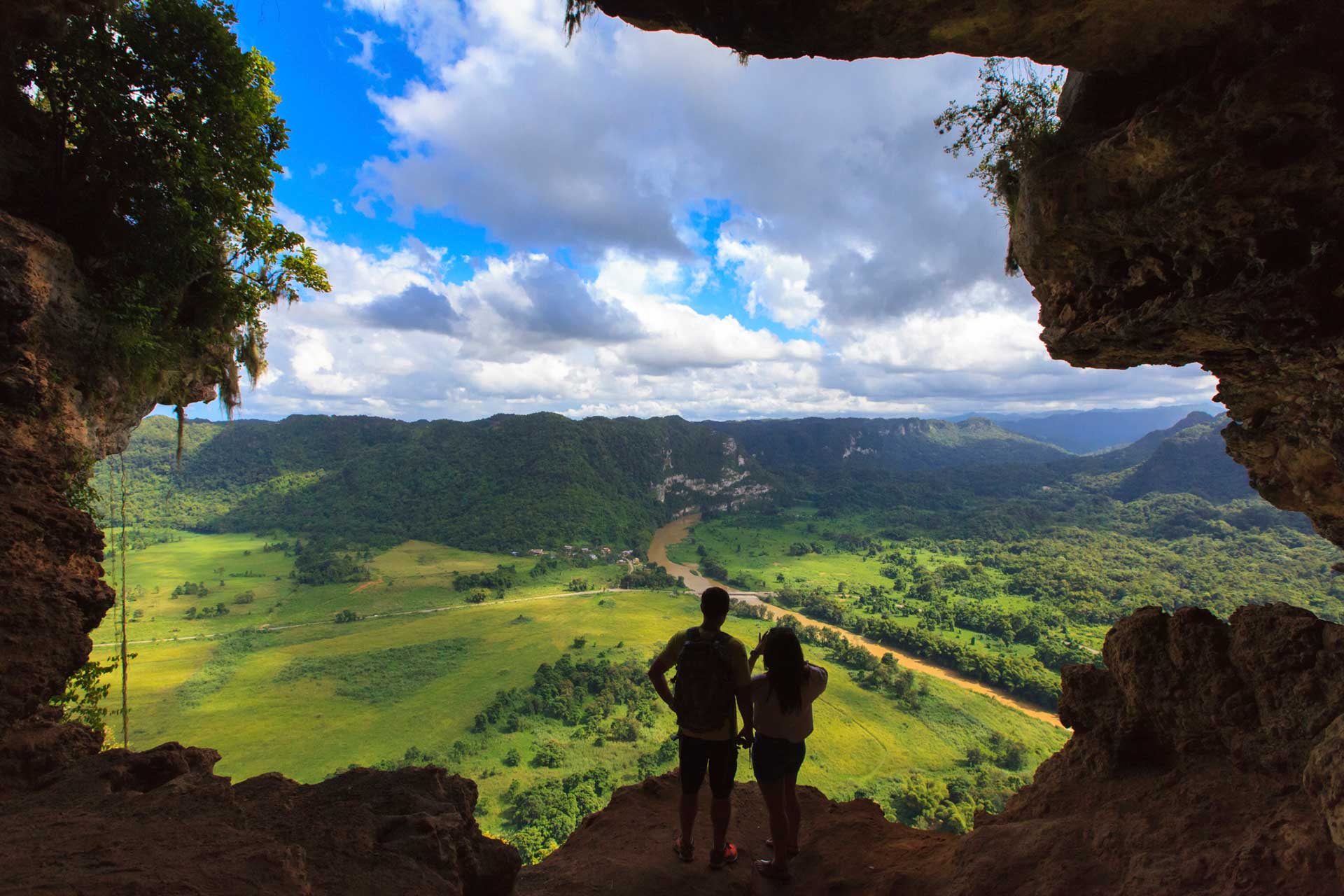
Cueva Ventana (window cave) is a large cave located a top a limestone cliff, overlooking the Rio Grande de Arecibo valley. Filled with stalagmites and stalactites. Route 10, Km 75. Guided tours $19, no children under 5 allowed. Open daily, 10:00 AM - 4:00 PM. 787-322-3554.
The Arecibo Lighthouse and Historical Park built by the Spaniards in 1898, the lighthouse still in use and was automated in 1964. In the premises, you'll find a museum with exhibits, a recreation area featuring a special area for children with replicas of ancient sailing ships and a pirate's island, a restaurant and sports facilities. Open Tue-Fri 9am-6pm, Sat-Sun 10am-7pm. Admissions: Adults $9, Children $7 and Parking $2. Carr. #655 Bo. Islote Sector El Muelle, (787) 880-7540.
The Dos Bocas Lake is a reservoir created in 1942, adjacent to the Río Abajo Forest, located 12 miles (19km) south of Arecibo. Free ferry ride across the lake are available, (787) 878-7279.
Other places worth exploring include:
- La Casa Ulanga Sede del Instituto de Cultura Puertorriqueña - Open Mon-Fri 8am-noon, 1pm-4:30pm. 7 Gonzalo Marin St., (787) 880-8020.
- Las Tunas Beach
- Los Negritos Beach
- Morillo Beach
- Museo de Arte e Historia de Arecibo - 8 Santiago Iglesias St.
- Plaza del Atlantico - Open Mon-Sat 9am-9pm, Sun 11am-5pm. 50 Stores. Rt 2, Km 80.1, (787) 878-0886
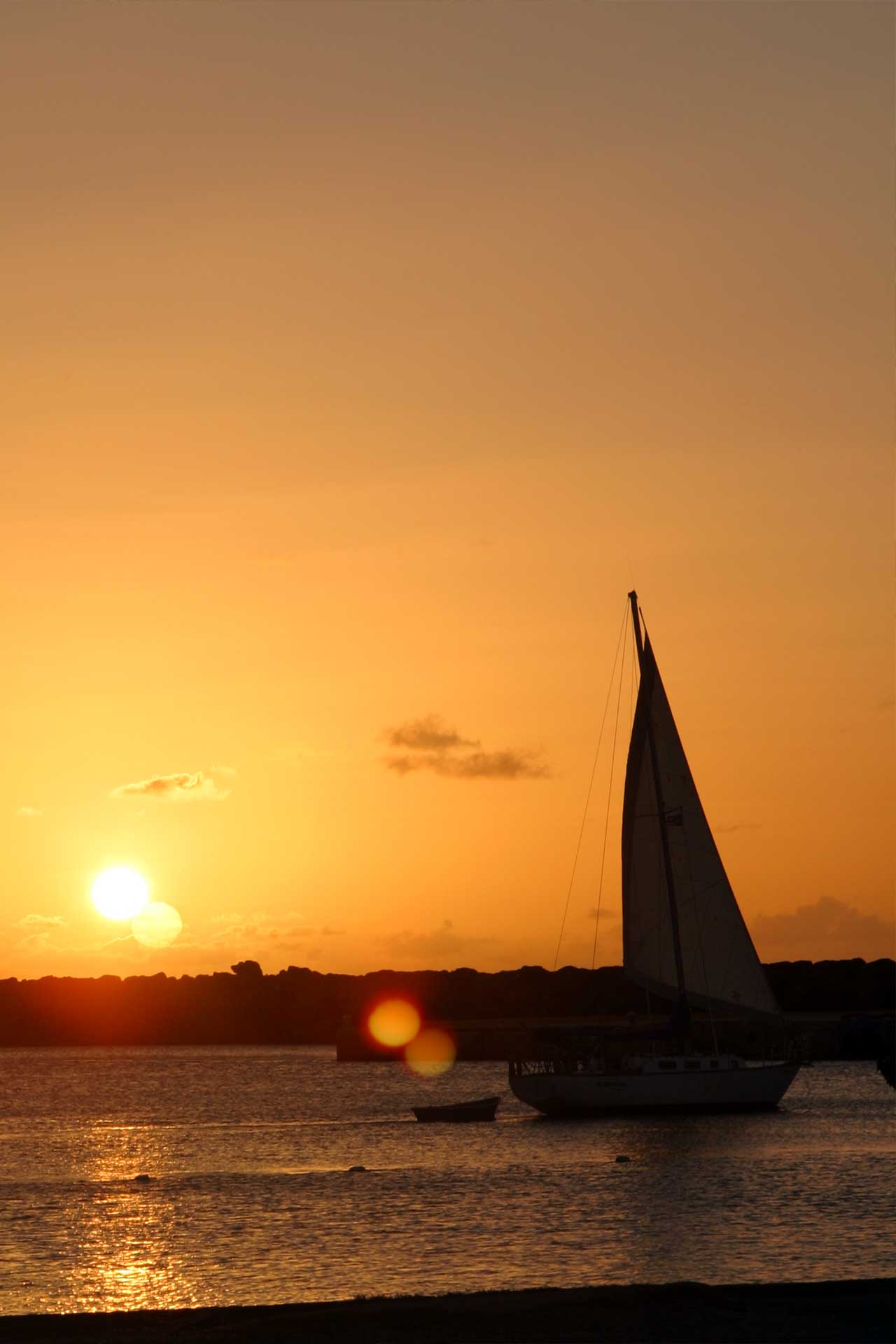
Photo: Santo Soto
Economy
Arecibo produces agricultural machinery, clothing, plastics, paper and sporting goods.
Geography
Arecibo is the largest city in geographical size on the island. Located in the Northern Coastal Valley region, adjacent to karst zone characterized by the presence of caves and wooded hills. Arecibo is bordering the Atlantic Ocean, north of Utuado and Lares; east of Hatillo; and west of Barceloneta and Florida.
The city is bathed by two rivers, Grande de Arecibo, which runs through the middle of the city and the Tanamá River.
Arecibo is made up of 19 barrios (wards/districts):
- Arenalejos
- Arrozal
- Cambalache
- Carreas
- Domingo Ruiz
- Dominguito
- Esperanza
- Factor
- Garrochales
- Hato Abajo
- Hato Arriba
- Hato Viejo
- Islote
- Miraflores
- Pueblo
- Río Arriba
- Sabana Hoyos
- Santana
- Tanamá
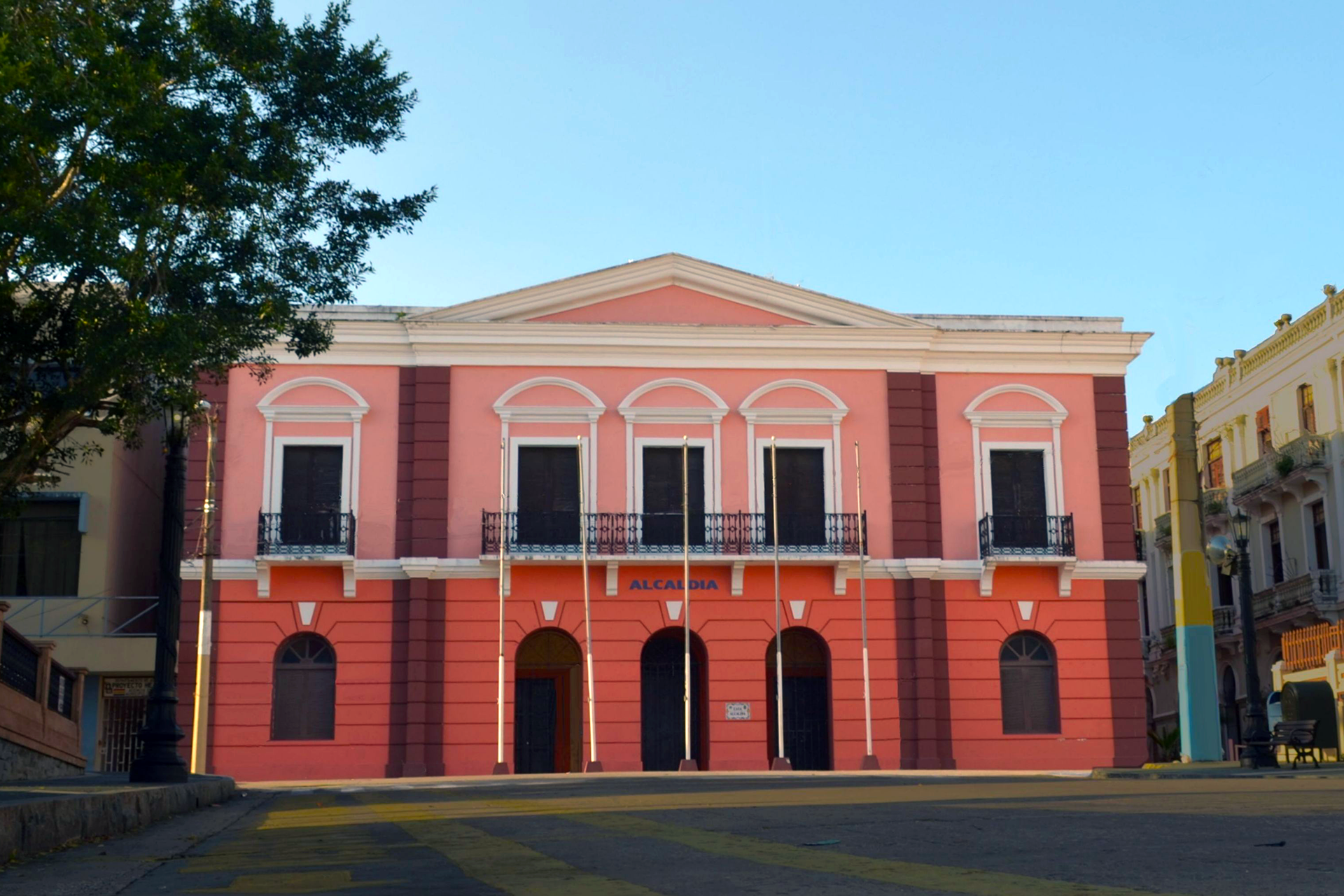
Climate
Arecibo enjoys year-round summer temperatures, an average annual temperature of 77.8°F. On average, the warmest month is August, and the coolest month is January. Arecibo averages 34.45 inches (110 mm) of rain per year. November is the average wettest month.
ARECIBO WEATHERNotable People
There are many well-known "arecibeños", among them:
- María Cadilla de Martinez, writer
- Luisa Capetillo, Puerto Rico's most famous labor organizers
- Cayetano Coll y Toste, historian
- José Gomez Brioso
- Francisco Gonzalo Marín, poet and politician
- René Marquéz, dramatist
- Antonio de los Reyes Correa, Captain of Infantry of the Spanish Army
- Victor Rojas
- Manuel Zeno Gandia, writer
Restaurants
- Alamar Restaurant (Sea Food), (787) 878-5658
Accommodations
- TJ Ranch (Guest House),
(787) 880-1217
Festivals and Events
- Carnaval del Capitan Correa - February
It's held in the Arecibo central plaza, where salsa groups and other groups mingle. (787) 879-1625 - Festival del Ceti - November
The festival it's a tribute to fishermen. (787) 878-2500 - Festival Folklorico - September
- Festival Playero - July
- Fiestas Patronales de San Felipe Apostol - May
Every year, Arecibo celebrates a patron saint festival. The festivities include dances, food, parades and religious processions.
Symbols
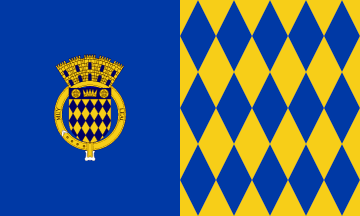
Flag
The flag of Arecibo derives its composition and colors from the Shield of the City. It is
divided vertically in two equal parts. The left side is blue having a belt that stands for
"Captain Correa", a local military hero from Spanish times. The right side is made up of
blue and yellow diamonds alternating in a checkerboard pattern.
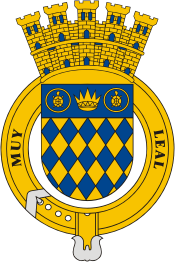
Coat of Arms
The shield is divided by diagonal lines in golden and blue rhombuses with a blue stripe in the superior part,
in which resides an opened five-point crown and which is adorned with drawings characterizing the art of the
Tainos. This combination of symbols represents the Indian Cacique (Chieftain) from whom the population's name
derives, the governor that erected the town and the hero Captain Correa who defended it.
The anthem of Arecibo was written by Jose A. Monrouzeau. The title is Arecibo.
Demographics *
Population
87,754
Land Area: 125.95 sq mi
Density: 691.2 per sq mi
Median Age: 45.1
Sex: 52% female
Economics **
$11,199
Median household income: $19,266
Puerto Rico: $21,058
Persons below poverty line: 47%
Housing, families and educational attainment *
Number of households
32,405
Housing units density:
343.4 (2013)
Persons per household: 2.55
High school grad or higher: 77.5%
Marital status: 31% married
* U.S. Census Bureau 2020 data, unless otherwise noted - Source: Quick Facts Puerto Rico.
** U.S. Census Bureau 2016-2020
Map References
Coordinates: 18.3442° N, 66.7528° W
ZIP Code: 00612, 00613, 00614, 00616, 00652, 00688
Driving Distance from San Juan: 54.5 miles
Driving Time: 1 hour, 16 minutes
Other Resources




